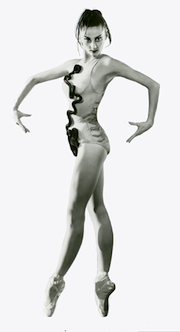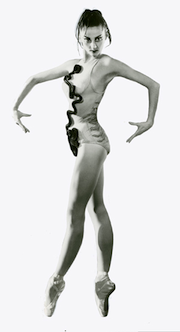
A balletic miracle will be on exhibit beginning March 21 at the Opera Plaza Cinemas, just a block away from the War Memorial where the San Francisco Ballet season is unfolding.
Afternoon of a Faun: Tanaquil Le Clercq brings back to life a legendary ballerina whose skyrocketing career was cut tragically short by polio, which paralyzed her at age 27.
Written and directed by Nancy Buirski, the documentary includes black-and-white films of Le Clercq in rehearsal and performance, with Jacques D'Amboise, of Afternoon of a Faun Jerome Robbins created for her.
"It is almost as though you are beholding mythological deities who have alighted briefly on the earth ... one of the great ballerinas of the 20th century," says The New York Times review.
Le Clercq became prototype of the "George Balanchine dancer," with El Greco-esque elongated physique and weightless elegance, the acclaimed prima ballerina of the New York City Ballet, just as Balanchine and Robbins took the company to world fame.
Born in Paris in 1929, Le Clercq moved to New York at age 5 and began her ballet training. She caught the attention of ballet masters and choreographers in her early teens. Later she became Balanchine's fourth and last ballerina wife, 1952—1969. Although she remained paralyzed from the waist down until her death in 2000, Le Clercq re-emerged as a dance teacher and author, bearing her condition with grace.
One of her first roles with NYCB was at age 15, dancing with Balanchine in a sinister foreshadowing of what was to become reality a dozen years later: Balanchine choreographed the piece for a polio charity benefit, dancing a character named Polio, with Le Clercq as his victim.

